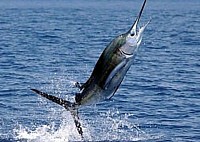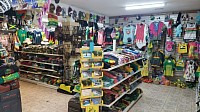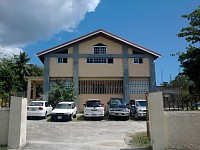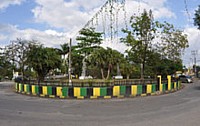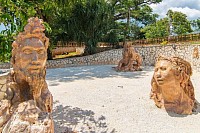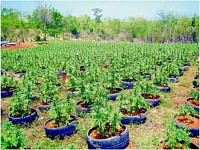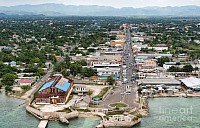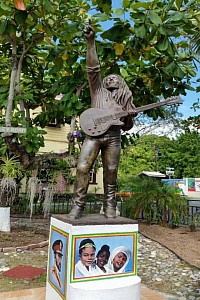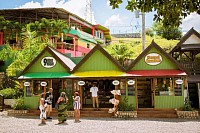Description
Fishing
Gift Shop
Church
Negril
Negril is a very small place in the parish of Westmoreland. Negril is about an hour and fifteen minute drive on the coastal highway from Sir Donald Sangster International Airport in Montego Bay St.James. Downtown Negril, the West End cliff resorts to the south of downtown, and the southern portion of the so-called "seven mile (11 km) beach" are in Westmoreland. The nearest large town is Savanna-la-Mar, the capital of Westmoreland Parish.
Negril Giants
Negril Giants Sculpture Park & Art Gallery was established in 2016. It's located in the hilly woodland of Ricky Jackson's nature reserve in Moreland Hill, Negril, Jamaica. A delightful balance between nature and art where the works are total part of the landscape, the park's aim is to foster appreciation for sculpture and art in general and to enrich local community.
Negril Giants have almost 40 original store sculpture and over 150 painting done by local artist. The owner's love for nature environment and art gave a birth to this unique art space.
Ganja Field
Savanna-la-mar town
Bob Marley Museum
The property also features a well-equipped 80-seat theatre, a photographic gallery, a record shop and a gift shop filled with a wide array of Bob Marley memorabilia.Relax and enjoy a sumptuous meal from the One Love Café after you’ve completed your tour which offers a peek into every aspect of Bob Marley’s life
Bob Marley Hometown
Nine Mile is the birthplace and final resting place of Robert Nesta Marley, more commonly known as Bob Marley. Bob Marley was born in a small cottage in the rural village of Nine Mile and lived here until he was 13 years old. His house and community gave Bob the inspiration for many of his well-known songs. The village of Nine Mile is located deep in the St. Ann countryside and is reached through a series of scenic winding rural roads. Nine Mile is a very small village consisting of several modest homes. Bob Marley's birthplace is easily recognisable from the flags bearing Rastafarian colours and the compound wall surrounding the property. Outside of the compound walls there are many members of the local community attempting to sell various goods and services, including tours of some interesting herb farms!
Blue Lagoon
The site was originally called The Blue Hole. However, following the success of the Brooke Shields film "The Blue Lagoon" which was filmed here, the site was re-named "The Blue Lagoon". The Blue Lagoon has attracted many high profile visitors, including Robin Moore, who wrote the French Connection whilst living here.
Dunn's River Falls
Dunns River Falls is about 180 feet (55 m) high and 600 feet (180 m) long, the waterfalls are terraced like giant natural stairs though some incorporate man-made improvements. Several small lagoons are interspersed among the vertical sections of the falls.The falls empty into the Caribbean Sea at the western end of an attractive white-sand beach.
Climbing Dunns River Falls is a popular tourist activity and is often, but not exclusively, performed with the help of tour guides from the park. It takes about 1-1.5 hours to climb with short breaks for photographs & video recordings taken by the guides. There are also stairs, alongside of the falls, for those who do not want to get wet or are unable to manage the rocky, uneven terrain of the actual waterfall.
Dunn's River Falls was featured in the first James Bond film Dr. No in 1962 by Ian Fleming. It was also used for a location shoot for the 1988 Tom Cruise film Cocktail and Reality TV show American's Next Top Model Cycle19 photoshoot on the falls.
